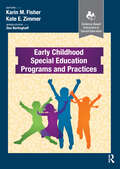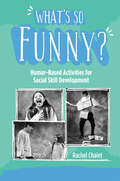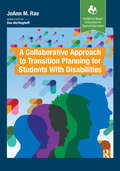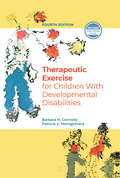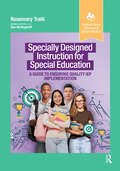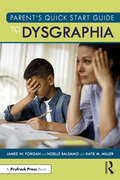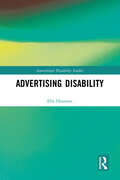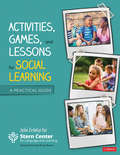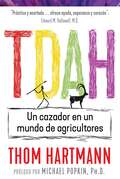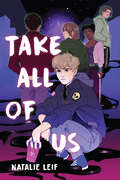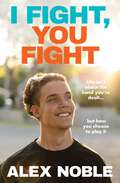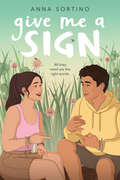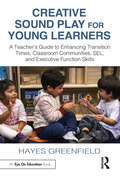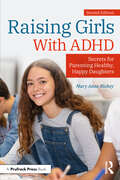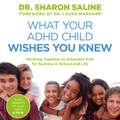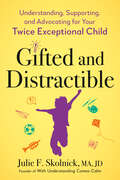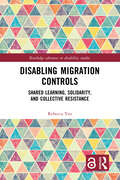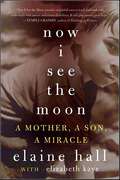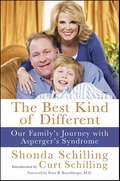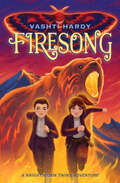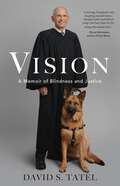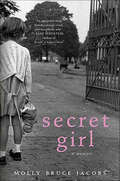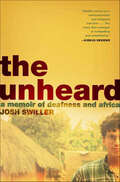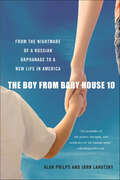- Table View
- List View
Early Childhood Special Education Programs and Practices (Evidence-Based Instruction in Special Education)
by Karin Fisher Kate ZimmerEarly Childhood Special Education Programs and Practices is a special education textbook that prepares pre- and in-service teachers with the knowledge, skills, and dispositions to deliver evidence-based instruction to promote positive academic and behavioral outcomes for young children (prekindergarten through second grade) with development delays and/or disabilities.Early Childhood Special Education Programs and Practices intertwines inclusive early childhood practices by using real-life anecdotes to illustrate evidence-based practices (EBPs) and procedures. The authors, experts in their fields, emphasize high-leverage practices, EBPs, and culturally sustaining pedagogy and align them with the practices, skills, and competencies recommended by the Council for Exceptional Children’s Division for Early Childhood. Families, administrators, and teacher educators of pre- and in-service early childhood special education and general early childhood education programs alike will find this book useful.Included in Early Childhood Special Education Programs and Practices are: An overview of early childhood and development of children ages 4 to 8 Strategies for relationship building with students, families, communities, and school personnel Tips on creating a caring and positive classroom environment Chapters devoted to evidence-based instruction in core subjects of reading and writing, mathematics, science, and social studies for students with disabilities in pre-K to second grade More than 80 images, photos, tables, graphs, and case studies to illustrate recommended Practices Also included with the text are online supplemental materials for faculty use in the classroom, consisting of an Instructor’s Manual and PowerPoint slides.Created with the needs of early childhood special educators in mind, Early Childhood Special Education Programs and Practices provides pre- and in-service teachers with the skills and practices they need to serve young children, their families, and communities across settings.
What's So Funny?: Humor-Based Activities for Social Skill Development
by Rachel ChaietWith ready-to-use lessons and strategies, What’s So Funny?: Humor-Based Activities for Social Skill Development provides readers with tools to help their clients improve their emotional intelligence through humor. Occupational therapists, speech-language pathologists, special educators, behavior therapists, and caregivers will benefit from the implementation of these strategies.What’s So Funny? contains a curriculum of more than 50 activities that emphasize two main ideas. The first is that humor (linguistic or physical) can be taught to many individuals with autism spectrum disorder or other disorders through explicit instruction, exposure to various types of humor, and embracing the individual’s preferred sense of humor. The second is that humorous activities can be used to increase social engagement, which can sometimes be a challenge for those with developmental disabilities.What’s So Funny? includes activities essential for individuals who: Appear to have a very limited concept or basic developmental level of humor Need to improve their understanding of socially appropriate humor Lack understanding of appropriate times to use humor Are nonverbal, have limited expressive communication skills, or use augmentative communication devices Have a difficult time initiating social interactions with their peers With a flexible program that can be used for either small groups or individuals from ages 7 years to adult, What’s So Funny?: Humor-Based Activities for Social Skill Development is a relevant and easy-to-use resource. Discussing a variety of types of humor on different developmental levels, from slapstick to word play, this program improves participants’ abilities to connect and engage with others through the powerful tool of humor.
A Collaborative Approach to Transition Planning for Students with Disabilities (Evidence-Based Instruction in Special Education)
by JoAnn M. RaeA Collaborative Approach to Transition Planning for Students with Disabilities is designed to inform aspiring special education teachers, special education teams, transition planning specialists and school administrators about the complex process of transition planning and to meet the transition requirements of special education legislation. Author Dr. JoAnn Rae has been in the field of special education for 34 years, in service as a special education teacher, special education administrator, teacher certification supervisor and as college faculty. The framework she outlines is specially designed to advance students’ involvement and participation in their lives, not only in the presence of the most severe sensory and intellectual disabilities, but also in the case of multiple disabilities. Unique scenarios not typically seen in other textbooks, such as IEP team disagreements, students with terminal illnesses, students with ill or overworked parents or students living in poverty are also explored. The text also includes: Descriptions of research-based practices to maximize students’ self-determination, autonomy, goal setting and ability to have successful life experiences Opportunities to integrate knowledge with practice by providing strategies that relate to the real-life difficulties students and transition planning specialists may encounter Easy-to-replicate communication tools, such as letters to students and parents, as examples to enhance collaboration Methods for teachers to effectively promote and increase student involvement and collaboration by using structured and interactive interviews A Collaborative Approach to Transition Planning for Students with Disabilities reflects the universal challenges that teachers, families and finally, the students themselves face, as they progress through school with a disability. For students with disabilities, the key component to successful transition planning is creating a collaborative atmosphere that allows them to be successful. This book promises to serve as an essential resource to all who are dedicated to that goal.
Therapeutic Exercise for Children with Developmental Disabilities
by Barbara H. Connolly Patricia MontgomeryTherapeutic Exercise for Children With Developmental Disabilities has been expanded and updated to include everything a student or professional needs to know when working with children with developmental disabilities. Continuing the emphasis on evidence-based practice from the previous editions, this comprehensive Fourth Edition enhances critical thinking and evaluation skills. Throughout the course of the text, Drs. Barbara H. Connolly and Patricia C. Montgomery present case studies of 5 children with various developmental disabilities to bring a problem-solving approach to each individual chapter topic. The case studies include 2 two children with cerebral palsy (GMFCS Levels I and V), a child with myelomeningocele, a child with Down syndrome, and a child with developmental coordination disorder and attention-deficit hyperactivity disorder. Each chapter’s examination, evaluation, and intervention recommendations are accompanied by specific treatment objectives and therapeutic activities, plus a companion website with 17 videos, which contains 90 minutes of content to illustrate concepts. Recent research and clinical recommendations, as well as related references, are also provided in each chapter. This Fourth Edition utilizes the American Physical Therapy Association’s Guide to Physical Therapist Practice 3.0 and the World Health Organization’s International Classification of Functioning, Disability, and Health--Children and Youth as its framework. The focus of the chapters is on children’s participation and empowerment, rather than body function and structure. Examples of new and updated topics in the Fourth Edition: • Practice in the NICU • Early mobility strategies • Communication strategies with children and families • Aquatic therapy • Upper extremity constraint-induced therapy • Mirror therapy • Lower extremity treadmill training With helpful videos, informative figures, and compelling case studies, Therapeutic Exercise for Children With Developmental Disabilities, Fourth Edition is the perfect resource for both students and practicing clinicians.
Specially Designed Instruction for Special Education: A Guide to Ensuring Quality IEP Implementation (Evidence-Based Instruction in Special Education)
by Rosemary TralliA new resource for teacher preparatory programs at institutes of higher education and school-based professional development, Specially Designed Instruction for Special Education: A Guide to Ensuring Quality IEP Implementation offers a detailed account of the legal requirements and evidence-based practices for educators to afford quality specialized instruction to eligible students.The latest entry in SLACK’s Evidence-Based Instruction in Special Education series, Specially Designed Instruction for Special Education provides educators with practical tools to define, plan, implement, and assess educational conditions and practices. After reading this text, special education teacher candidates and educators will possess the knowledge and skills to ensure student success through specially designed instruction, align interventions with student strengths and needs, and engage in collaborations to develop and implement quality Individualized Education Programs.What’s included in Specially Designed Instruction for Special Education: Individuals with Disabilities Education Act connections with references to federal regulations and relevant court cases Evidence-based practices and tools that support specialized instruction Key takeaways that summarize concepts and practices associated with the chapter content Included with the text are online supplemental materials for faculty use in the classroom.Specially Designed Instruction for Special Education provides readers with a comprehensive understanding of the composition and conditions of specialized instruction and the tools to ensure their adherence to the legal and programming components of specialized instruction.
Parent’s Quick Start Guide to Dysgraphia
by James W. Forgan Noelle BalsamoParent’s Quick Start Guide to Dysgraphia provides parents and caregivers with an immediate overview of dysgraphia and steps they can take to support and encourage their child. Each chapter is packed with detailed and helpful information, covering identification, strategies for improvement, advocating for your child, and maintaining your child’s self-esteem. Summary and resource sections at the end of each chapter give quick guidance to busy readers. Topics include a wealth of research-backed activities, strategies for improving penmanship, making writing fun, technological assistance, and more. Offering straightforward, easy to understand, and evidence-based information, this book is a go-to resource for caregivers parenting a child with dysgraphia.
Advertising Disability (Autocritical Disability Studies)
by Ella HoustonAdvertising Disability invites Cultural Disability Studies to consider how advertising, as one of the most ubiquitous forms of popular culture, shapes attitudes towards disability. The research presented in the book provides a much-needed examination of the ways in which disability and mental health issues are depicted in different types of advertising, including charity 'sadvertisements', direct-to-consumer pharmaceutical advertisements and 'pro-diversity' brand campaigns. Textual analyses of advertisements from the eighteenth century onwards reveal how advertising reinforces barriers facing disabled people, such as stigmatising attitudes, ableist beauty 'ideals', inclusionism and the unstable crutch of charity. As well as investigating how socio-cultural meanings associated with disability are influenced by multimodal forms of communication in advertising, insights from empirical research conducted with disabled women in the United Kingdom and the United States are provided. Moving beyond traditional textual approaches to analysing cultural representations, the book emphasises how disabled people and activists develop counternarratives informed by their personal experiences of disability, challenging ableist messages promoted by advertisements. From start to finish, activist concepts developed by the Disabled People's Movement and individuals' embodied knowledge surrounding disability, impairments and mental health issues inform critiques of advertisements.Its critically informed approach to analysing portrayals of disability is relevant to advertisers, scholars and students in advertising studies and media studies who are interested in portraying diversity in marketing and promotional materials as well as scholars and students of disability studies and sociology more broadly.
Activities, Games, and Lessons for Social Learning: A Practical Guide
by Stern Center for Language and LearningIn these games, the prize is success in school—and life. Having good social skills doesn’t just affect classroom behavior—it’s the key to making learning stick. When students improve their self-regulation, social communication, and perspective-taking competencies, they are better prepared to challenge themselves academically, take on tough tasks, and collaborate with teachers and classmates to achieve real, lasting school success. And since these skills also improve life outside school, the benefits come full circle. Designed for both explicit instruction and "learning by doing," this practical guide provides hands-on activities that are easily adapted into any curriculum and can be used in general education, special education, after-school settings, and in the home. The design of each game keeps kids engaged and motivated, while educators benefit from clear, thorough explanations that unpack the complexities of social learning. Other behind-the-scenes features include: Evidence-based, teacher-tested lessons Anecdotes and real-world examples Links to relevant research Expansion ideas for applying learned skills to broader situations Templates and reproducibles for easy implementation This curated collection of activities puts social-learning theory into practice, helping even the most challenging children develop the social skills necessary for real success in school—and beyond.
Activities, Games, and Lessons for Social Learning: A Practical Guide
by Stern Center for Language and LearningIn these games, the prize is success in school—and life. Having good social skills doesn’t just affect classroom behavior—it’s the key to making learning stick. When students improve their self-regulation, social communication, and perspective-taking competencies, they are better prepared to challenge themselves academically, take on tough tasks, and collaborate with teachers and classmates to achieve real, lasting school success. And since these skills also improve life outside school, the benefits come full circle. Designed for both explicit instruction and "learning by doing," this practical guide provides hands-on activities that are easily adapted into any curriculum and can be used in general education, special education, after-school settings, and in the home. The design of each game keeps kids engaged and motivated, while educators benefit from clear, thorough explanations that unpack the complexities of social learning. Other behind-the-scenes features include: Evidence-based, teacher-tested lessons Anecdotes and real-world examples Links to relevant research Expansion ideas for applying learned skills to broader situations Templates and reproducibles for easy implementation This curated collection of activities puts social-learning theory into practice, helping even the most challenging children develop the social skills necessary for real success in school—and beyond.
TDAH: Un cazador en un mundo de agricultores
by Thom Hartmann• Explica que las personas con TDAH no tienen trastornos, sino que son &“cazadores en un mundo de agricultores&”; es decir, poseen un conjunto de habilidades mentales únicas que les habrían permitido prosperar en una sociedad de cazadores-recolectores • Ofrece métodos y prácticas concretas y sin fármacos para ayudar a los &“cazadores&”, y a sus padres, maestros y administradores, a aceptar sus diferencias, fomentar la creatividad y encontrar el éxito en la escuela, el trabajo y el hogar • Revela cómo algunas de las personas más exitosas del mundo pueden ser etiquetadas como cazadores con TDAH, incluidos Benjamin Franklin, Thomas Edison y Andrew CarnegieCon un 10% de los niños del mundo occidental que muestra indicios de tener trastorno por déficit de atención con hiperactividad, o TDAH, y un número creciente de adultos autodiagnosticándose, después de décadas de lucha, debemos plantear la pregunta: ¿cómo pudo cometer tal &“error&” la naturaleza? En este libro, Thom Hartmann explica que las personas con TDAH no son anormales, desordenadas o disfuncionales, sino simplemente &“cazadores en un mundo de agricultores&”. A menudo muy creativos y resueltos en la búsqueda de un objetivo elegido por ellos mismos, las personas con síntomas de TDAH poseen un conjunto de habilidades mentales únicas, las cuales les habrían permitido prosperar en una sociedad de cazadores-recolectores. Como cazadores, habrían estado constantemente escaneando su entorno, buscando comida o amenazas (distracción); habrían tenido que actuar sin vacilación (impulsividad) y amado el entorno de alta estimulación y lleno de riesgos del campo de caza. Con nuestras escuelas públicas, lugares de trabajo de oficina y fábricas estructuradas, aquellos que heredan un excedente de &“habilidades de cazador&” a menudo se sienten frustrados en un mundo que no los comprende ni los apoya. Como muestra Hartmann, al reformular nuestra visión del TDAH, podemos comenzar a verlo no como un trastorno, sino como una diferencia y, en cierto modo, una ventaja. El autor revela cómo algunas de las personas más exitosas del mundo pueden ser etiquetadas como cazadores de TDAH, aparte de proporcionar prácticas y métodos concretos, sin fármacos, para ayudar a los cazadores, y a sus padres, maestros y gerentes, a aceptar sus diferencias, fomentar la creatividad y encontrar el éxito en la escuela, en el trabajo y en casa. Además de ofrecer una guía de &“supervivencia&” para ayudar a afinar sus habilidades naturales, en lugar de suprimirlas, Hartmann muestra que cada mente, ya sea cazadora, agricultora o en algún punto intermedia, tiene valor y un gran potencial a la espera de ser aprovechado.
Take All of Us
by Natalie LeifA YA unbury-your-gays horror in which an undead teen must find the boy he loves before he loses his mind and body.Five years ago, a parasite poisoned the water of Ian&’s West Virginia hometown, turning dozens of locals into dark-eyed, oil-dripping shells of their former selves. With chronic migraines and seizures limiting his physical abilities, Ian relies on his best friend and secret love Eric to mercy-kill any infected people they come across.Until a new health report about the contamination triggers a mandatory government evacuation, and Ian cracks his head in the rush. Used to hospitals and health scares, Ian always thought he'd die young... but he wasn&’t planning on coming back. Much less face the slow, painful realization that Eric left him behind to die.Desperate to find Eric and the truth before the parasite takes over him, Ian along with two others left behind—his old childhood rival Monica and the jaded prepper Angel—journey to track down Eric. What they don't know is that Eric is also looking for Ian, and he's determined to mercy-kill him.
I Fight, You Fight: Life isn't about the hand you're dealt, but how you choose to play it
by Alex NobleThe inspiring story of a young man whose wisdom and strength can teach us all how to live life to the fullest, no matter what it throws at us. Sixteen-year-old Alex Noble was a high school rugby star with a promising sporting career ahead of him when an on-field injury left him fighting for his life in the ICU. Following a four-day coma and a diagnosis of C4 quadriplegia, Alex&’s first words to his brother Zac were, &‘If I fight, you fight.&’ These words became a war cry as Alex&’s friends, family and community rallied around him, watching in awe as he fought to regain control over his body and defy his diagnosis. From learning to breathe and move again to travelling the world, starting his own business, and even going skydiving, Alex&’s story is about the power of mastering your own mind, finding happiness and taking risks to achieve your goals – no matter how out of reach they may seem. Full of warmth, humour and insight, this is a book that will teach you principles to live your life by, written by a young man who has put them into practice.I Fight, You Fight is so much more than an inspiring memoir – it&’s a philosophy for finding happiness and reaching your true potential.
Give Me a Sign
by Anna SortinoJenny Han meets CODA in this big-hearted YA debut about first love and Deaf pride at a summer camp.Lilah is stuck in the middle. At least, that&’s what having a hearing loss seems like sometimes—when you don&’t feel &“deaf enough&” to identify as Deaf or hearing enough to meet the world&’s expectations. But this summer, Lilah is ready for a change.When Lilah becomes a counselor at a summer camp for the deaf and blind, her plan is to brush up on her ASL. Once there, she also finds a community. There are cute British lifeguards who break hearts but not rules, a YouTuber who&’s just a bit desperate for clout, the campers Lilah&’s responsible for (and overwhelmed by)—and then there&’s Isaac, the dreamy Deaf counselor who volunteers to help Lilah with her signing.Romance was never on the agenda, and Lilah&’s not positive Isaac likes her that way. But all signs seem to point to love. Unless she&’s reading them wrong? One thing&’s for sure: Lilah wanted change, and things here . . . they're certainly different than what she&’s used to.
Creative Sound Play for Young Learners: A Teacher’s Guide to Enhancing Transition Times, Classroom Communities, SEL, and Executive Function Skills
by Hayes GreenfieldThis fun and engaging guide invites you to use sound-making as a collaborative, play-based practice in your early childhood classroom—first to transform tricky transition times and ultimately to support your children’s executive functioning development and social-emotional learning. The book offers techniques and ideas for every teacher to reach every child in their classroom including verbal, nonverbal, and special needs children. Easy to integrate into all standard early years curricula, it focuses on three basic elements of sound: pitch, volume, and duration. The book features an "overview of the school year" calendar and an implementation guide, in addition to a variety of suggested sound-making activities that start out simply and, through the course of the book, expand to engage children’s creativity in more dynamic ways. Creative Sound Play for Young Learners is key reading for any preschool teacher, leader, or parent.
Raising Girls With ADHD: Secrets for Parenting Healthy, Happy Daughters
by Mary Anne RicheyThe second edition of the best-selling Raising Girls with ADHD features the latest information on research and treatment for girls with ADHD presented in an easily accessible format.The book is packed with expert information to empower parents to make decisions about identification, treatment options, behavioral strategies, personal/social adjustment, educational impact, and many other issues from preschool through high school. Featuring practical suggestions and interventions, this book is a comprehensive guide for parents interested in helping their daughters with ADHD reach their full potential. Based on the author’s years of personal and professional experience, this book covers topics not often found in other parenting guides, such as the preschool years and early diagnosis, a Dynamic Action Treatment Plan parents and their daughters can work on together, as well as guidance for teens on money management, getting their first job and post high school planning. In addition to expert guidance, this new edition also features interviews with girls and their mothers sharing their personal strategies for success in managing ADHD.Full of tactics, resources, and tools, this book will provide the support you need to build a positive relationship with your daughters while seeking the most appropriate treatments and support.
What Your ADHD Child Wishes You Knew: Working Together to Empower Kids for Success in School and Life
by Dr Sharon SalineWhat if you could work with your child, motivating and engaging them in the process, to create positive change once and for all? In this insightful and practical book, veteran psychologist Sharon Saline shares the words and inner struggles of children and teens living with ADHD-and a blueprint for achieving lasting success by working together. Based on more than 25 years of experience counseling young people and their families, Dr. Saline's advice and real-world examples reveal how parents can shift the dynamic and truly help kids succeed. Topics include:Setting mutual goals that foster cooperationEasing academic strugglesTackling everyday challenges, from tantrums and backtalk to staying organized, building friendships, and more.With useful exercises and easy-to-remember techniques, you'll discover a variety of practical strategies that really work, creating positive change that will last a lifetime.
Gifted and Distractible: Understanding, Supporting, and Advocating for Your Twice Exceptional Child
by Julie F. SkolnickA practical, research-based guide that demystifies giftedness and learning differences in order to help &“twice exceptional&” children thrive.Does your child exhibit giftedness and behavioral issues like meltdowns, power struggles, and difficulty relating to their peers? Are they out-of-the-box thinkers requiring different teaching and learning methods? It&’s a widely held misconception that intellectual ability and social and emotional success go hand in hand. In fact, &“twice exceptional&” kids—those who are gifted and have simultaneous learning differences like ADHD, Autism, or dyslexia—are often misunderstood by parents, teachers, and themselves. This much-needed and empowering guide reveals the unique challenges these remarkable kids face, and offers strength-based, hands-on strategies for understanding, supporting, and advocating for twice exceptional kids. In a world that labels them lazy, scattered, attention-seeking, and a problem that can&’t be solved, these tools will help you reimagine the world through your child&’s unique perspective—so you can help them thrive.
Disabling Migration Controls: Shared Learning, Solidarity, and Collective Resistance (ISSN)
by Rebecca YeoWhen people are prevented from meeting their needs, the impact is disabling, whether in the immigration system or in the wider population. Drawing on many years of research and activism, this book argues that insights from the disabled people’s movement, particularly the original Social Model of Disability, can be usefully extended to focus resistance on the disabling restrictions imposed on people subject to asylum and immigration controls.While acknowledging the pain and discomfort of many impairments and of forced displacement, the book focuses on injustices that can be changed. It does not catalogue the hostility of the ‘hostile environment’. Nor does it promote inclusive asylum restrictions. An unjust system is not transformed by including disabled people. Policies designed to deprive people of essential needs and to stoke hatred among the wider population are core elements of the rise of fascism. In this context, bringing together movements for disability and migrant justice could help build urgently needed solidarity and resistance with which to develop a society based on equity and common humanity.Quotations and images are used to convey the messages and priorities of disabled people seeking asylum, ensuring that the book is both engaging and grounded in the insights of lived experience. This book will interest people seeking to improve social justice, including scholars of disability, migration, sociology and politics.
Now I See the Moon: A Mother, a Son, and the Miracle of Autism
by Elizabeth Kaye Elaine Hall“Now I See the Moon provides insightful ways to teach and work with individuals with autism and severe disabilities. It will give parents great hope.” — Temple Grandin, author of Thinking in Pictures“This magnificent work vividly demonstrates the joy and hope of discovering the creative and emotional capacities which exist in all children, but especially in those children with autism and other special needs.” — Dr. Stanley Greenspan, author of The Child with Special Needs and Engaging AutismWhen her son Neal was diagnosed with autism, former Hollywood acting coach Elaine Hall, aka “Coach E,” took matters into her own hands and used her resources to guide him toward an increasingly independent life. In the process, she founded The Miracle Project, a groundbreaking organization that uses the performing arts to connect with children with autism. Both controversial and unorthodox, Hall’s innovative approach has been praised by leaders in the field of autism. She was also the subject of an Emmy-Award-winning documentary Autism: The Musical. Hall now speaks around the country sharing her wisdom. Now I See the Moon is a story of hope, faith, and miracles; it is a story only a mother could tell.
The Best Kind of Different: Our Family's Journey with Asperger's Syndrome
by Shonda SchillingIn The Best Kind of Different, Shonda Schilling, the wife of Major League Baseball All Star, former Boston Red Sox, and World Series championship pitcher Curt Schilling, shares the story of their son’s Asperger’s Syndrome, how it changed their lives, and what other parents can learn about this increasingly common diagnosis. Candid and compelling, The Best Kind of Different traces their family’s struggle with Asperger’s, following Curt and Shonda as they come to understand their son’s differences and in the process relearn everything they thought they knew about parenting.
Firesong: A Brightstorm Adventure (Brightstorm Twins #3)
by Vashti HardyIn this spirited third Brightstorm adventure, the twins journey north to protect the legendary earth-bear and to discover their family’s hidden history. Arthur and Maudie Brightstorm are back home in Lontown and finally settling in after their exhilarating—and secret—adventures in Erythea. Maudie’s sky-ak invention is a hit, and Harriet has just announced that she will share her sky-ship’s hydroelectric technology. But tensions are brewing. Pitch is becoming more and more difficult to mine, and the existence of super-sapient creatures on other continents threatens how the Explorers see themselves in the natural order of the world. When Arthur and Maudie begin hearing a strange song summoning them north—a song only they can hear—they know there’s an adventure waiting for them that may change the lives of everyone in the Wide. As the crew of the Aurora prepares for their trip, they’re joined by new members and old friends. But they’re not the only sky-ship journeying northward to uncover the region’s secrets. . . . Return to Vashti Hardy’s “marvelously imagined” world (Publisher's Weekly) in this sweeping and propulsive new addition to the Brightstorm series.
Vision: A Memoir of Blindness and Justice
by David S. TatelThe "moving, thoughtful, and inspiring memoir" (Bryan Stevenson, author of Just Mercy) by one of America&’s most accomplished public servants and legal thinkers—who spent years denying and working around his blindness, before finally embracing it as an essential part of his identity. David Tatel has served nearly 30 years on America&’s second highest court, the United States Court of Appeals for the D.C. Circuit, where many of our most crucial cases are resolved—or teed up for the Supreme Court. He has championed equal justice for his entire adult life; decided landmark environmental and voting cases; and embodied the ideal of what a great judge should be. Yet he has been blind for the past 50 of his 80-plus years. Initially, he depended upon aides to read texts to him, and more recently, a suite of hi-tech solutions has allowed him to listen to reams of documents at high speeds. At first, he tried to hide his deteriorating vision, and for years, he denied that it had any impact on his career. Only recently, partly thanks to his first-ever guide dog, Vixen, has he come to fully accept his blindness and the role it's played in his personal and professional lives. His story of fighting for justice over many decades, with and without eyesight, is an inspiration to us all.
Secret Girl: A Memoir
by Molly Bruce JacobsFor decades, a well-to-do Baltimore family guarded a secret too painful to reveal, much less speak of among themselves. For one daughter, that secret would haunt her for years but ultimately compel her to take surprising risks and reap unbelievable rewards--the story of which forms the stunning narrative of this remarkable memoir.When Molly Bruce Jacobs, the family's eldest daughter, finds herself newly sober at the age of thirty-eight, she finally seeks out and comes face-to-face with this secret: Anne, a younger sister who was diagnosed at birth with hydrocephalus ("water on the brain") and mental retardation, then institutionalized. Anne has never been home to visit, and Jacobs has never seen her. Full of trepidation, Jacobs goes to meet her sister for the first time. As the book unfilds and the sisters grow close, Jacobs learns of the decades of life not shared, and gains surprising insights about herself, including why she drank for most of her adult life. In addition, she gradually comes to understand that her parents' reasons for placing Anne in an institution were far more complex than she'd ever imagined.
The Unheard: A Memoir of Deafness and Africa
by Josh SwillerA young man's quest to reconcile his deafness in an unforgiving world leads to a remarkable sojourn in a remote African village that pulsates with beauty and violence These are hearing aids. They take the sounds of the world and amplify them." Josh Swiller recited this speech to himself on the day he arrived in Mununga, a dusty village on the shores of Lake Mweru. Deaf since a young age, Swiller spent his formative years in frustrated limbo on the sidelines of the hearing world, encouraged by his family to use lipreading and the strident approximations of hearing aids to blend in. It didn't work. So he decided to ditch the well-trodden path after college, setting out to find a place so far removed that his deafness would become irrelevant.That place turned out to be Zambia, where Swiller worked as a Peace Corps volunteer for two years. There he would encounter a world where violence, disease, and poverty were the mundane facts of life. But despite the culture shock, Swiller finally commanded attention—everyone always listened carefully to the white man, even if they didn't always follow his instruction. Spending his days working in the health clinic with Augustine Jere, a chubby, world-weary chess aficionado and a steadfast friend, Swiller had finally found, he believed, a place where his deafness didn't interfere, a place he could call home. Until, that is, a nightmarish incident blasted away his newfound convictions.At once a poignant account of friendship through adversity, a hilarious comedy of errors, and a gripping narrative of escalating violence, The Unheard is an unforgettable story from a noteworthy new talent.
The Boy from Baby House 10: From the Nightmare of a Russian Orphanage to a New Life in America
by Alan Philps John LahutskyIn 1990, a young boy afflicted with cerebral palsy was born, prematurely, in Russia. His name was Vanya. His mother abandoned him to the state childcare system and he was sent to a bleak orphanage called Baby House 10. Once there, he entered a nightmare world he was not to leave for more than eight years. Housed in a ward with a group of other children, he was clothed in rags, ignored by most of the staff and given little, if any, medical treatment. He was finally, and cruelly, confined for a time to a mental asylum where he lived, almost caged, lying in a pool of his own waste on a locked ward surrounded by psychotic adults. But, that didn't stop Vanya. Even in these harsh conditions, he grew into a smart and persistent young boy who reached out to everyone around him. Two of those he reached out to—Sarah Philps, the wife of a British journalist, and Vika, a young Russian woman—realized that Vanya was no ordinary child and they began a campaign to find him a home. After many twists and turns, Vanya came to the attention of a single woman living in the United States named Paula Lahutsky. After a lot of red tape and more than one miracle, Paula adopted Vanya and brought him to the U.S. where he is now known as John Lahutsky, an honors student at Freedom High School in Bethlehem, Pennsylvania and a member of the Boy Scouts of America Order of the Arrow. In The Boy From Baby House 10, Sarah's hus band, Alan Philps, helps John Lahutsky bring this inspiring true-life story of a small boy with a big heart and an unquenchable will to readers everywhere.
